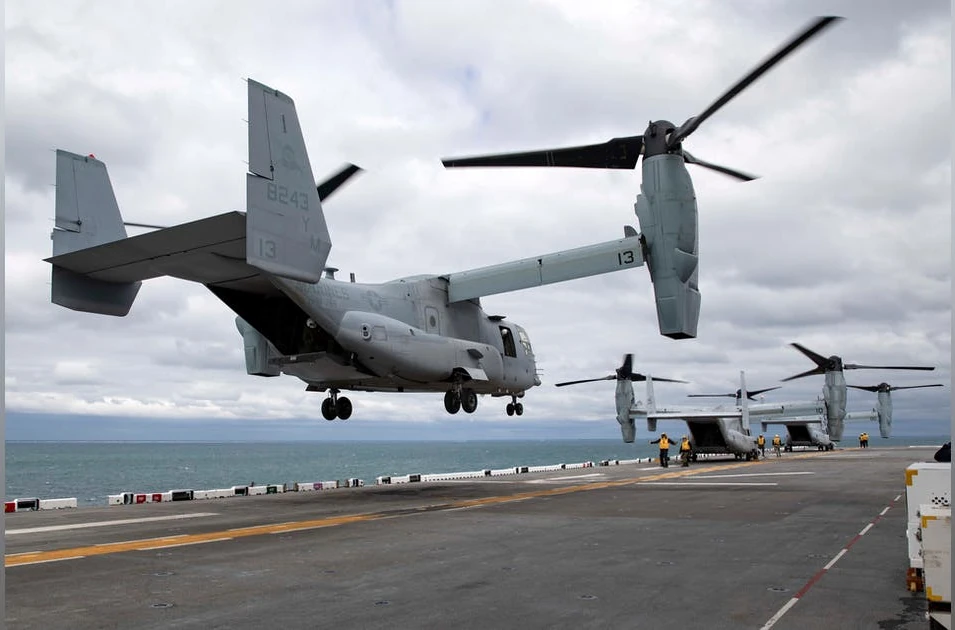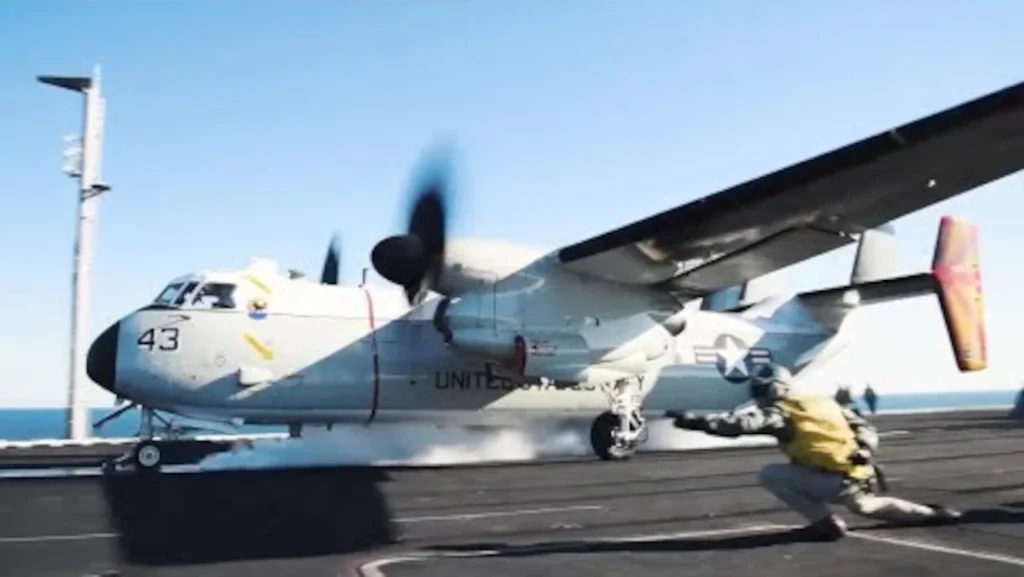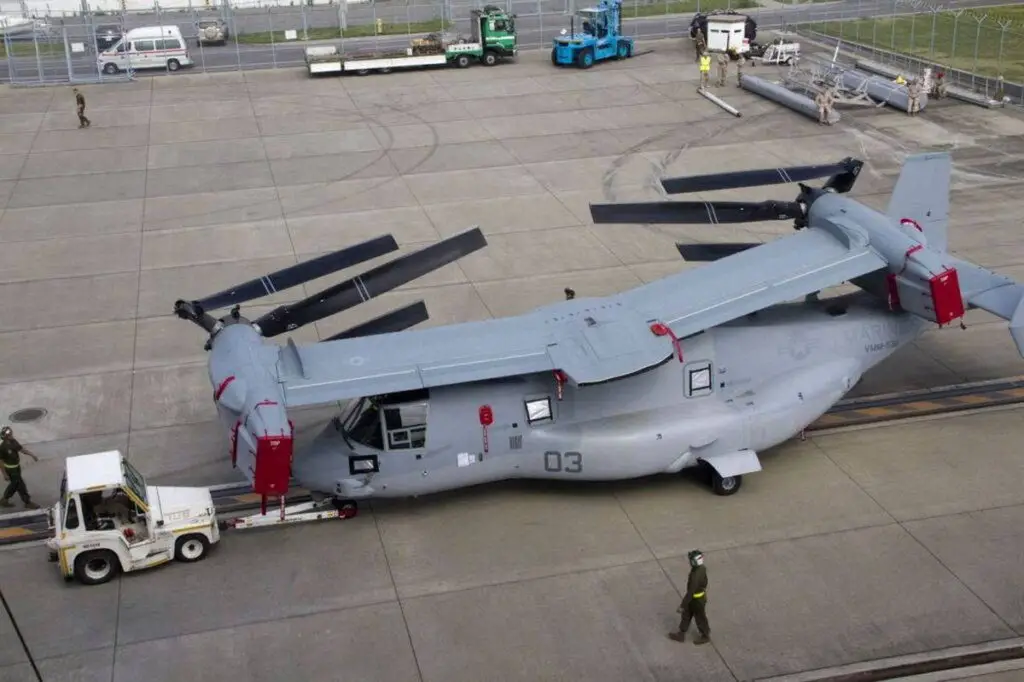The U.S. Navy confirmed the achievement of initial operational readiness with a new modification of the Osprey tiltrotor, which increased the carrying capacity and range by about 120 km. The modification of the CMV-22B Osprey passed the final tests on February 17-18. The main task that the U.S. Air Force Command sets in terms of operating the new version of tiltrotors is operating as part of the aviation wing of aircraft carriers.
U.S. Navy Rear Admiral Andrew Loisel said the first deployment of a new modification of the CMV-22B Osprey tiltrotor in conjunction with the air wing of the aircraft carrier USS Carl Vinson has taken place and called it an operational success.

The American rear admiral said that the new modification of the tiltrotor should provide more effective support for the crews of aircraft carriers, including the prompt delivery of goods.
Andrew Loisel said the tiltrotors should form the basis of the transport wing of aircraft carriers of the future. During the tests, they confirmed their performance.
CMV-22B Osprey tiltrotors delivered payloads onboard the aircraft carrier Carl Vinson during the tests. The payload included provisions, mail and accessories. Also, onboard the tiltrotor, U.S. Navy and Marine Corps troops were delivered to the aircraft carrier.
Now, the CMV-22B Osprey tiltrotor aircraft have received IOC (Initial Operational Clearance) status, which allows them to be used in transport missions.
The modification
In January 2017, the U.S. began production of tiltrotors with an increased flight range. The U.S. Navy had signed a contract with Bell Boeing to supply the sixth batch of CMV-22B hybrid aircraft.
Under the contract terms, the “sixth lot” will include 22 CMV-22B tiltrotor – a modification of the V-22 Osprey with bigger fuel tanks.

The U.S. Department of Defense plans to order 44 CMV-22B tiltrotors for the Navy, which will be used to transfer troops and supplies. The main difference between the CMV-22B and the base model is the presence of external fuel tanks. Due to the larger volume of fuel, the maximum range of the tiltrotor flight, without in-flight refuelling, will be increased from 860 to 1150 nautical miles (2100 km). In the service of the U.S. Navy, the CMV-22B tiltrotor aircraft will replace the Northrop Grumman C-2 Greyhound carrier-based medium-range transport aircraft, with a flight range is 2,400 km. C-2 Greyhound has been serving the carriers since the 1960s.
Modified CMV-22B was to be ready by 2015. Serial production of new tiltrotors was planned to begin in 2018 and enter service in 2020.
Tiltrotor
A tiltrotor is a relatively new type of aircraft that combines the advantages of an aeroplane and a helicopter – vertical takeoff and landing capabilities at high speed and range. The first such aircraft was developed by Bell Helicopters and Boeing Helicopters in the 80s and entered service with the U.S. Army in 2005 under the name Bell Boeing V-22 Osprey.
Bell Boeing V-22 Osprey
The V-22 Osprey is the first serial military aircraft with a tipping rotor (tiltrotor). The Osprey can take off and land vertically and take off or land using a short taxiway. The development of the aircraft was to combine the capabilities of a high-speed helicopter and a long-range turboprop aircraft.
The United States military made an unsuccessful attempt in 1980 to free American hostages in Iran. The operation showed that the helicopters involved were not up to the task of the mission. It led to the need for an aircraft to take off and land vertically and fly faster, higher and farther than a conventional helicopter.

In response to these requirements, the Joint-service Vertical Take-off/Landing Experimental Aircraft (JVX ) project, initiated in 1981 by the U.S. Department of Defense, was launched. It led to the development of two variants of the Osprey tiltrotor – MV-22 for the Navy and Marine Corps and CV-22 for the U.S. Air Force.
The V-22 Osprey has one swivel turboprop engine with a transfer mechanism and a rotor (propeller) at the end of each wing. The engine is tilted vertically for takeoff and landing, and the rotors are kept horizontal in helicopter mode.
Both engines lean forward 90 degrees within 12 seconds when transitioning to en-route flight. As a result, the V-22 Osprey becomes a twin-engine turboprop aircraft (aeroplane flight mode). On average, the V-22 spends more than 75% of its flight time in aeroplane mode. For short taxiway takeoffs and landings, the actuators tilt forward at an angle of about 45 degrees.
The tilting wings also helped the naval requirement to minimize the space occupied by the V-22 on board the ship. Its wings, engines, and propellers in the folded state are located along the aircraft’s longitudinal axis. The complex mechanics of the engines and the possibility of transformation were the most complex technical challenges that had to be overcome during the development of the V-22 “Osprey.”
